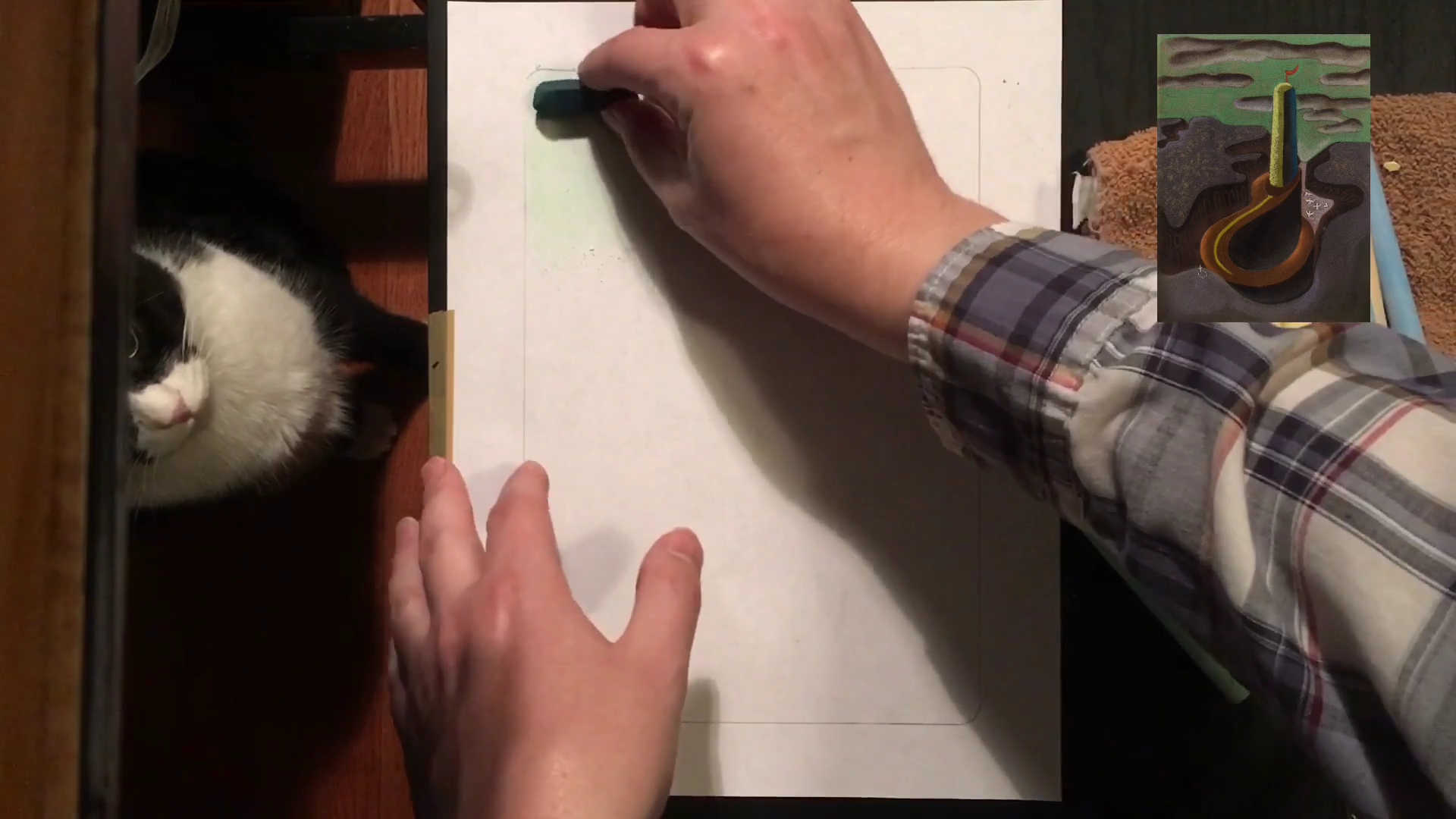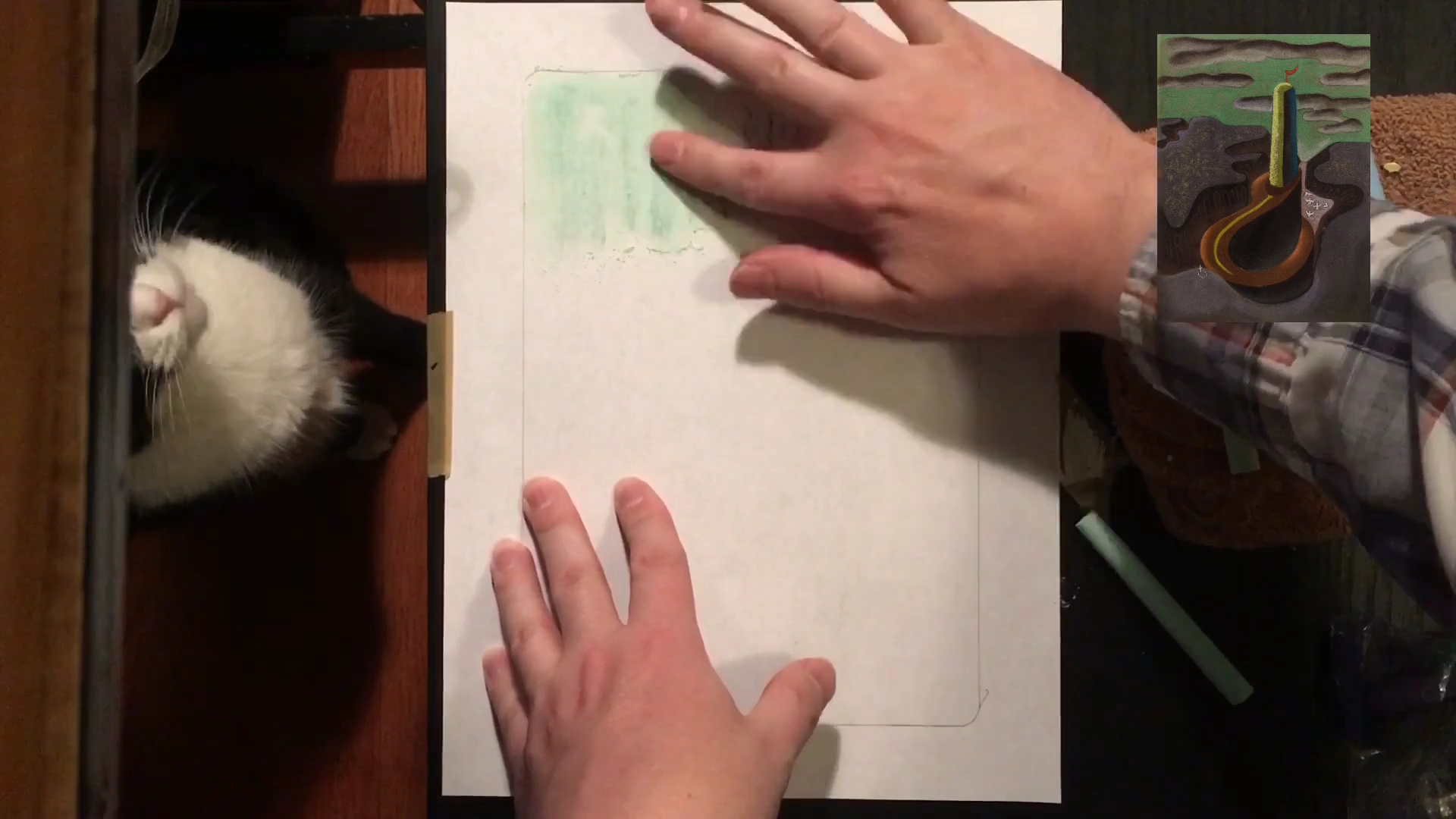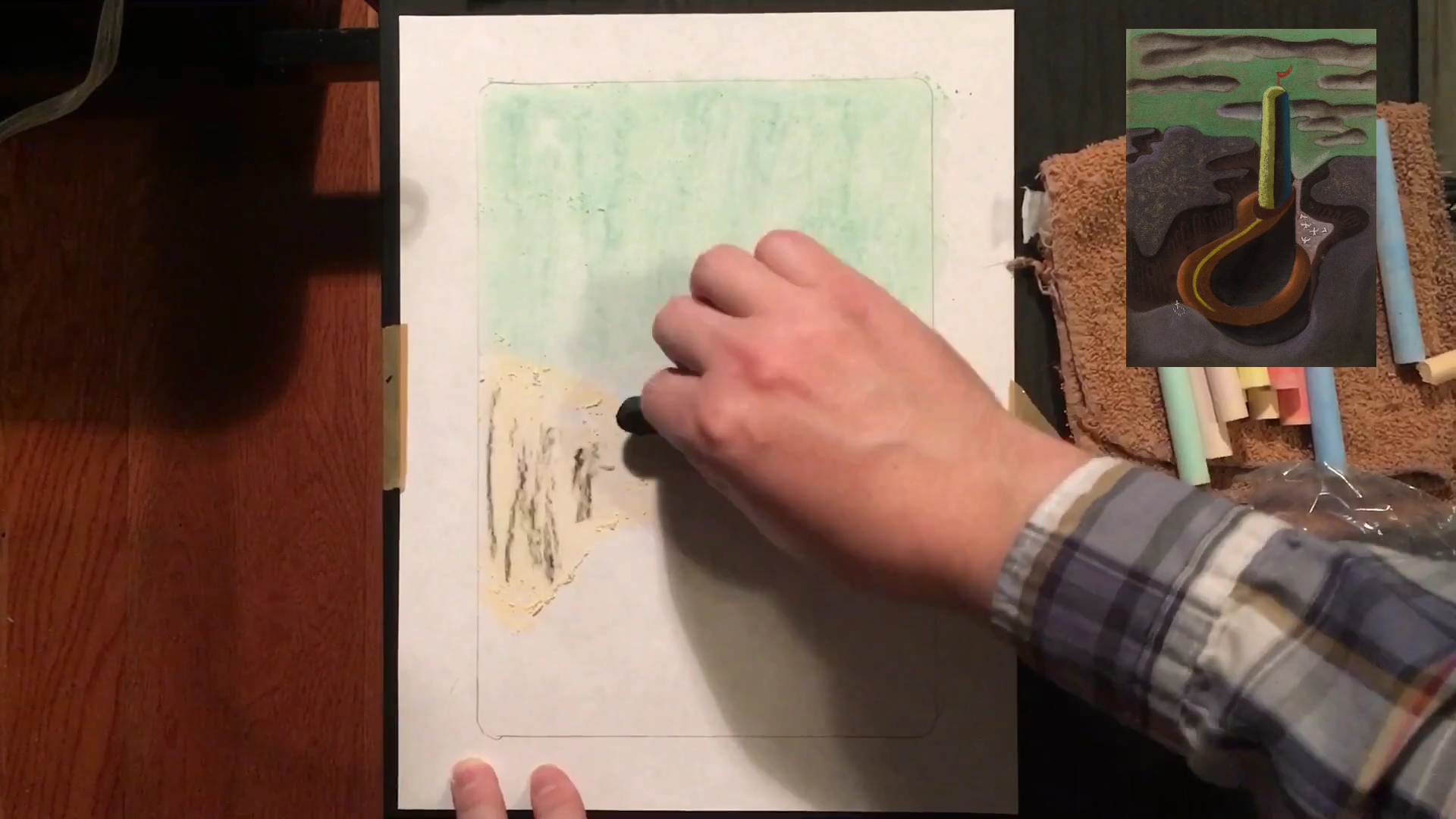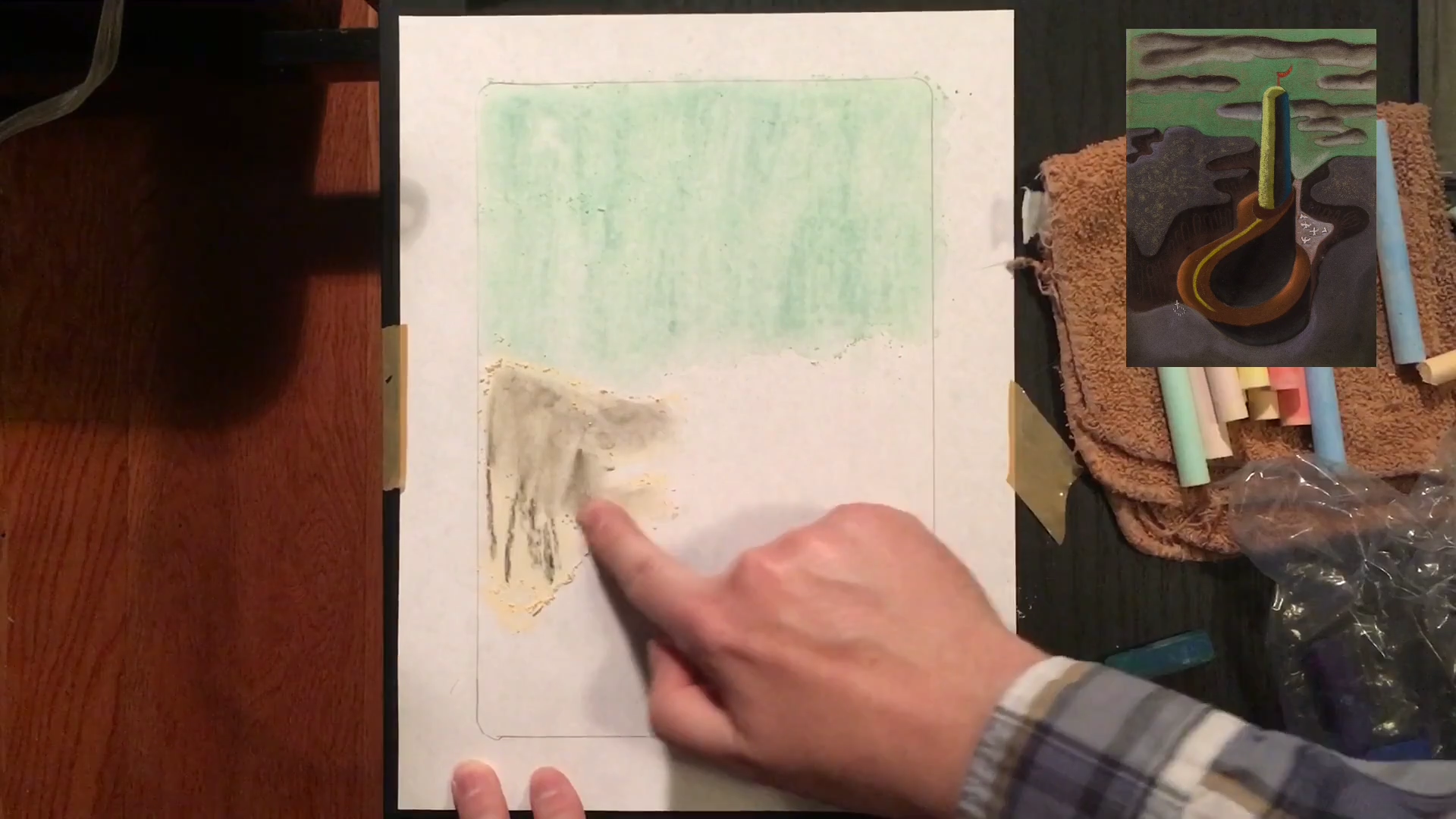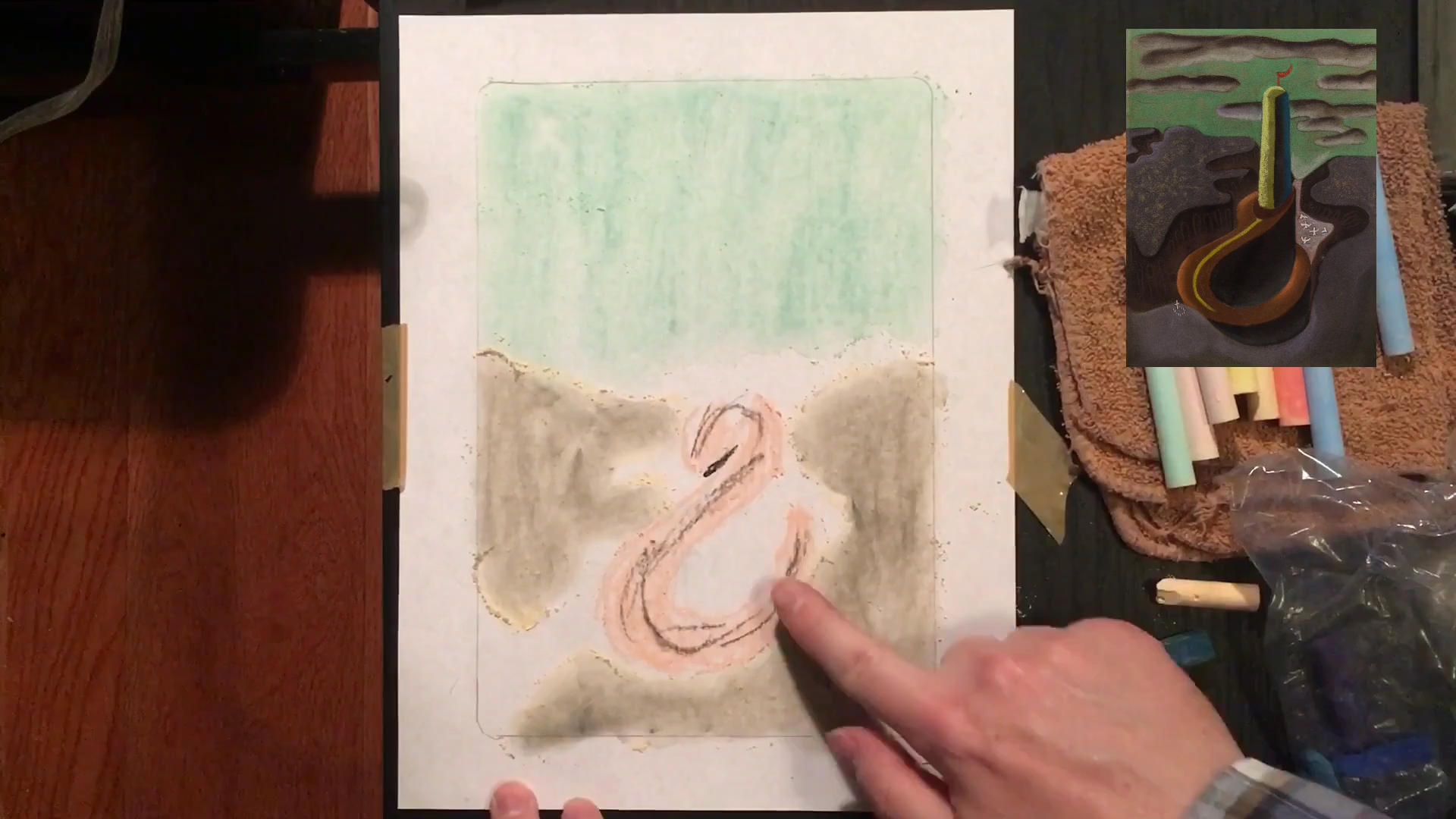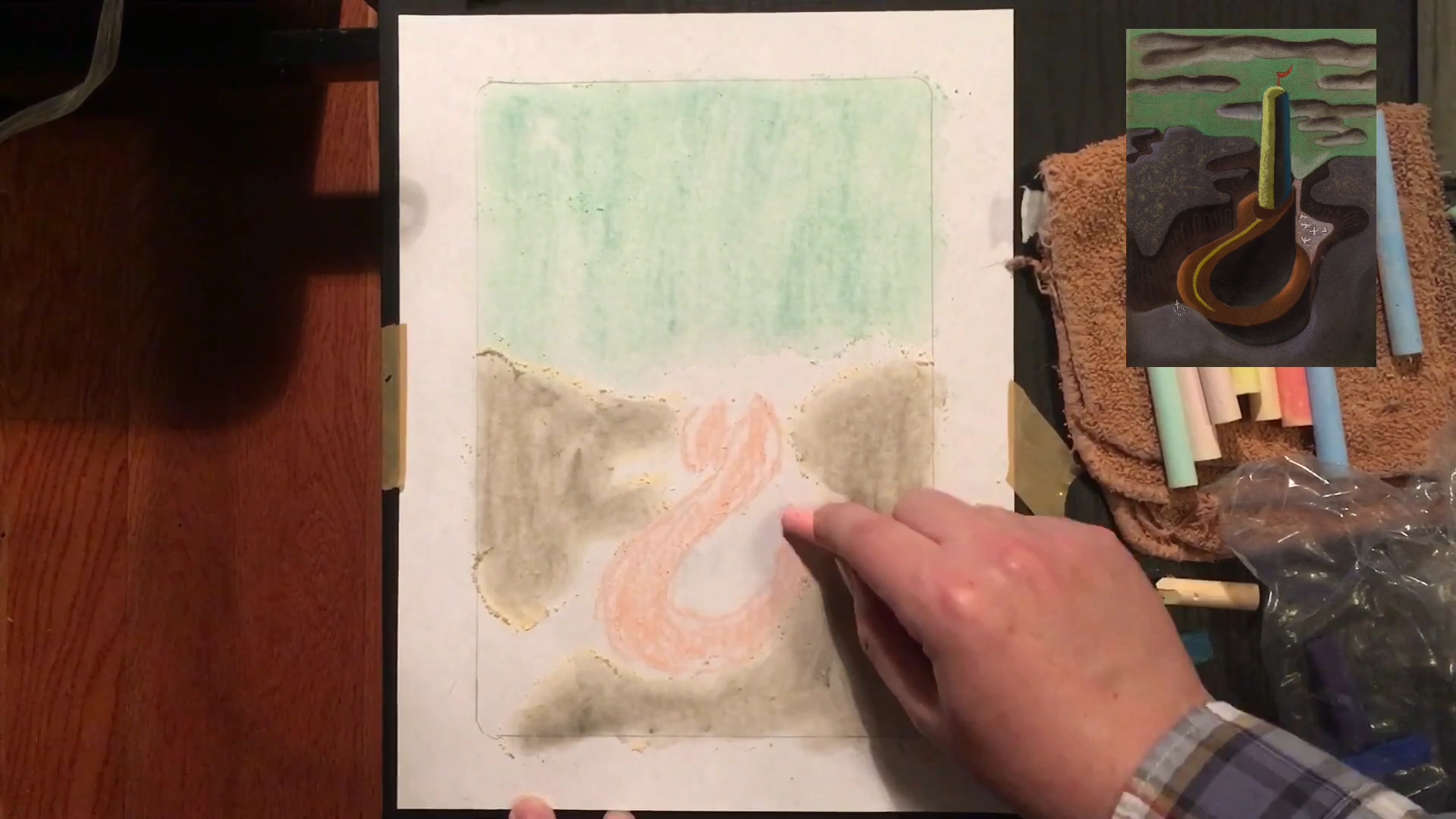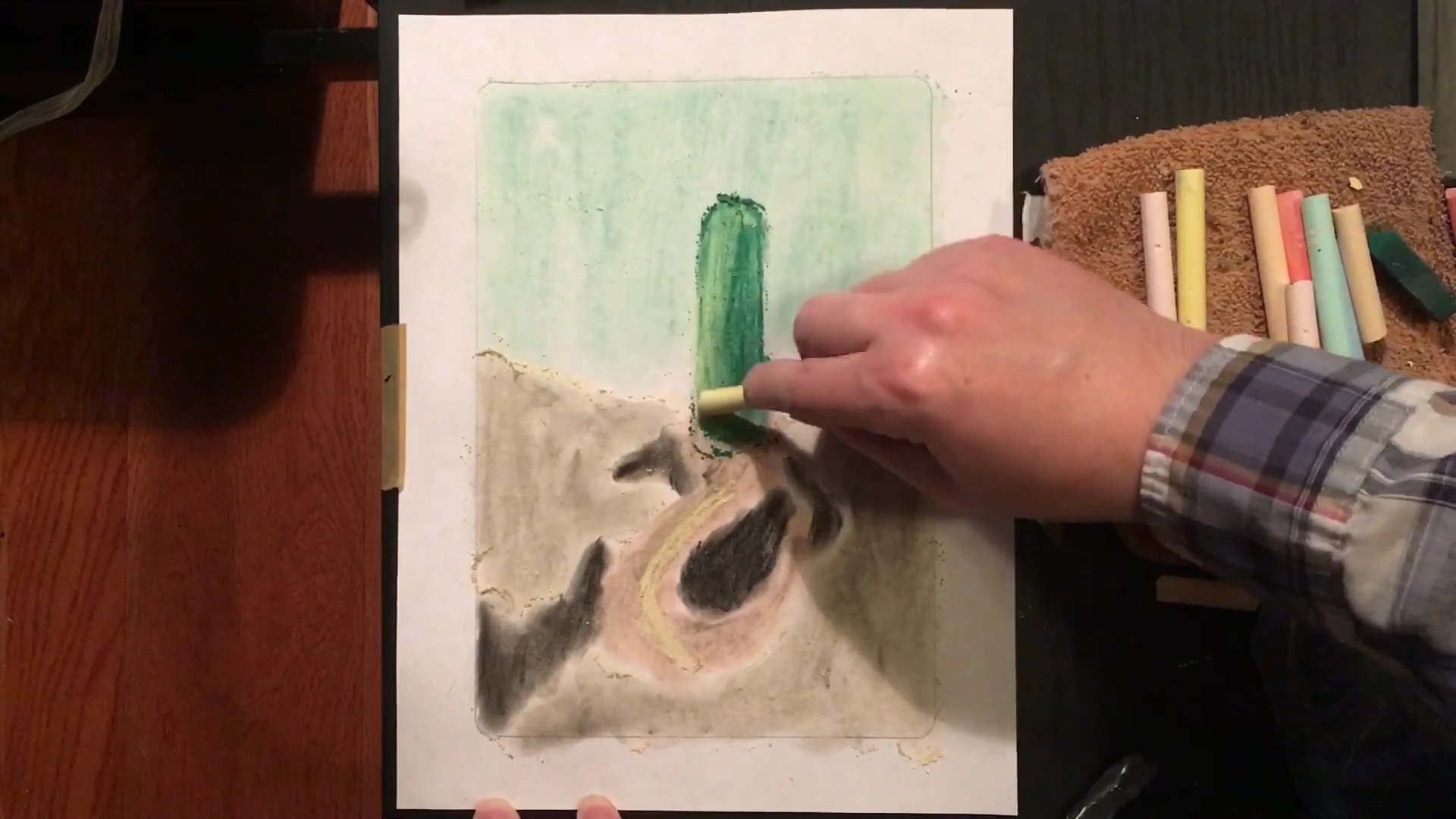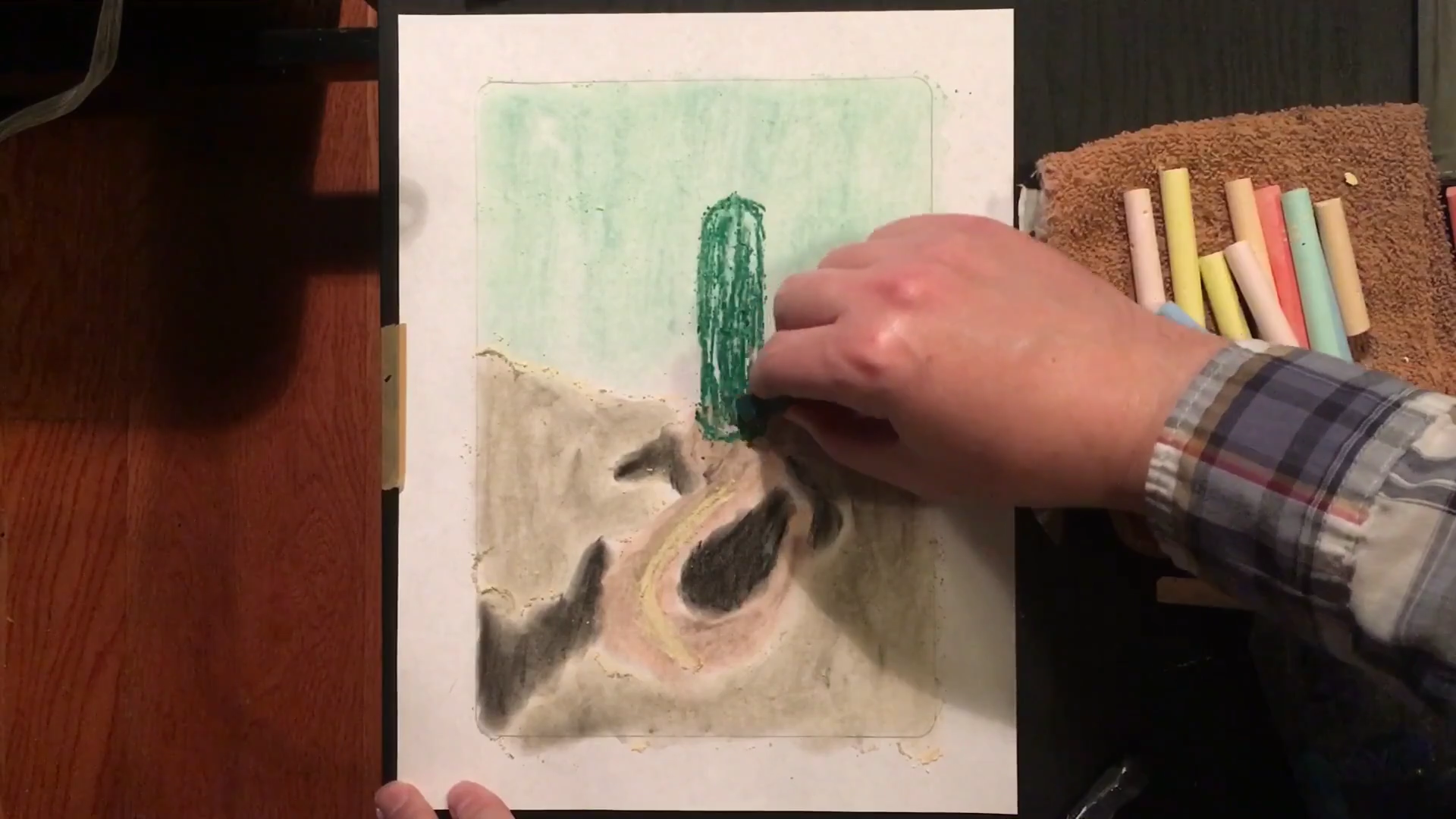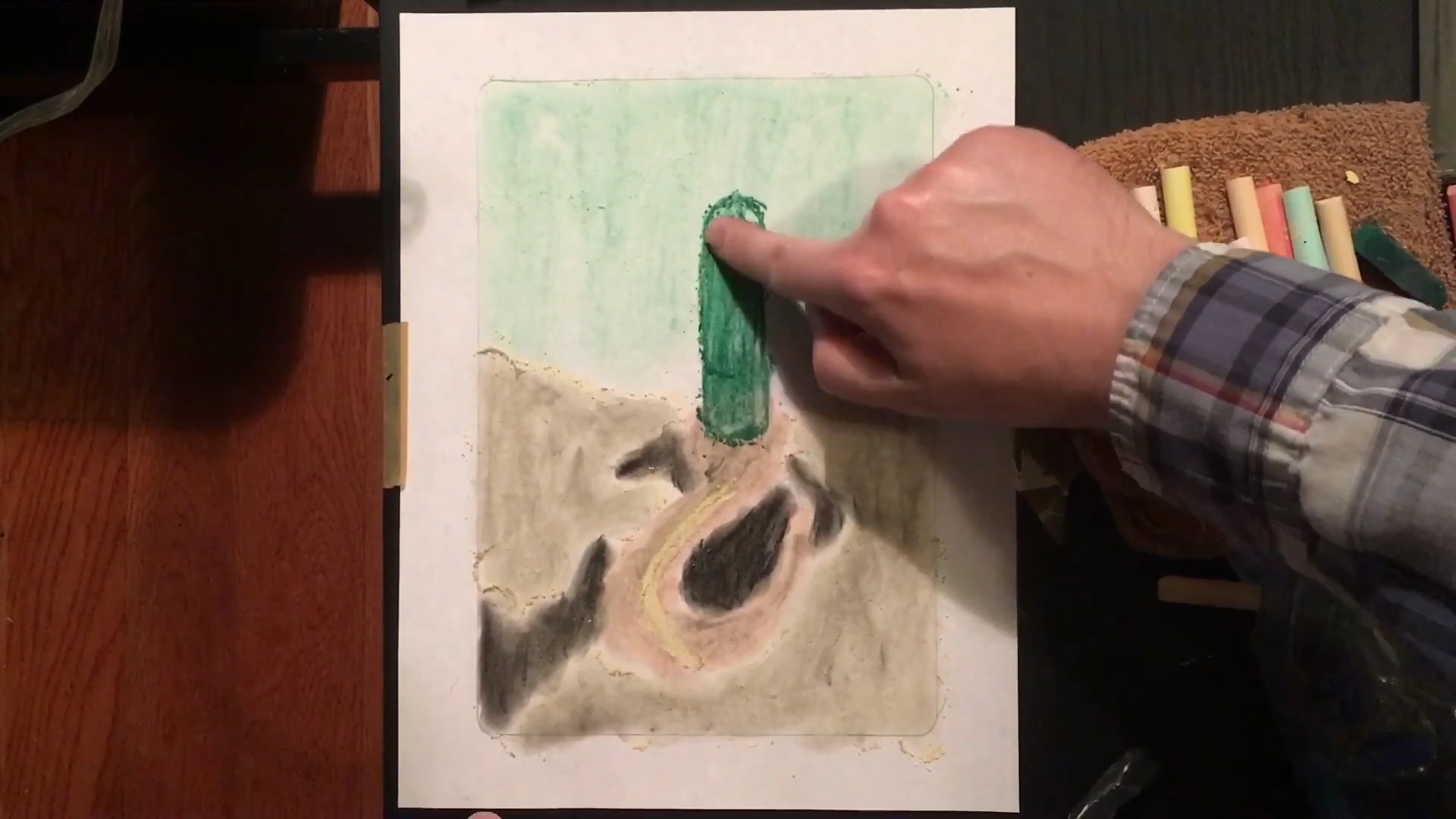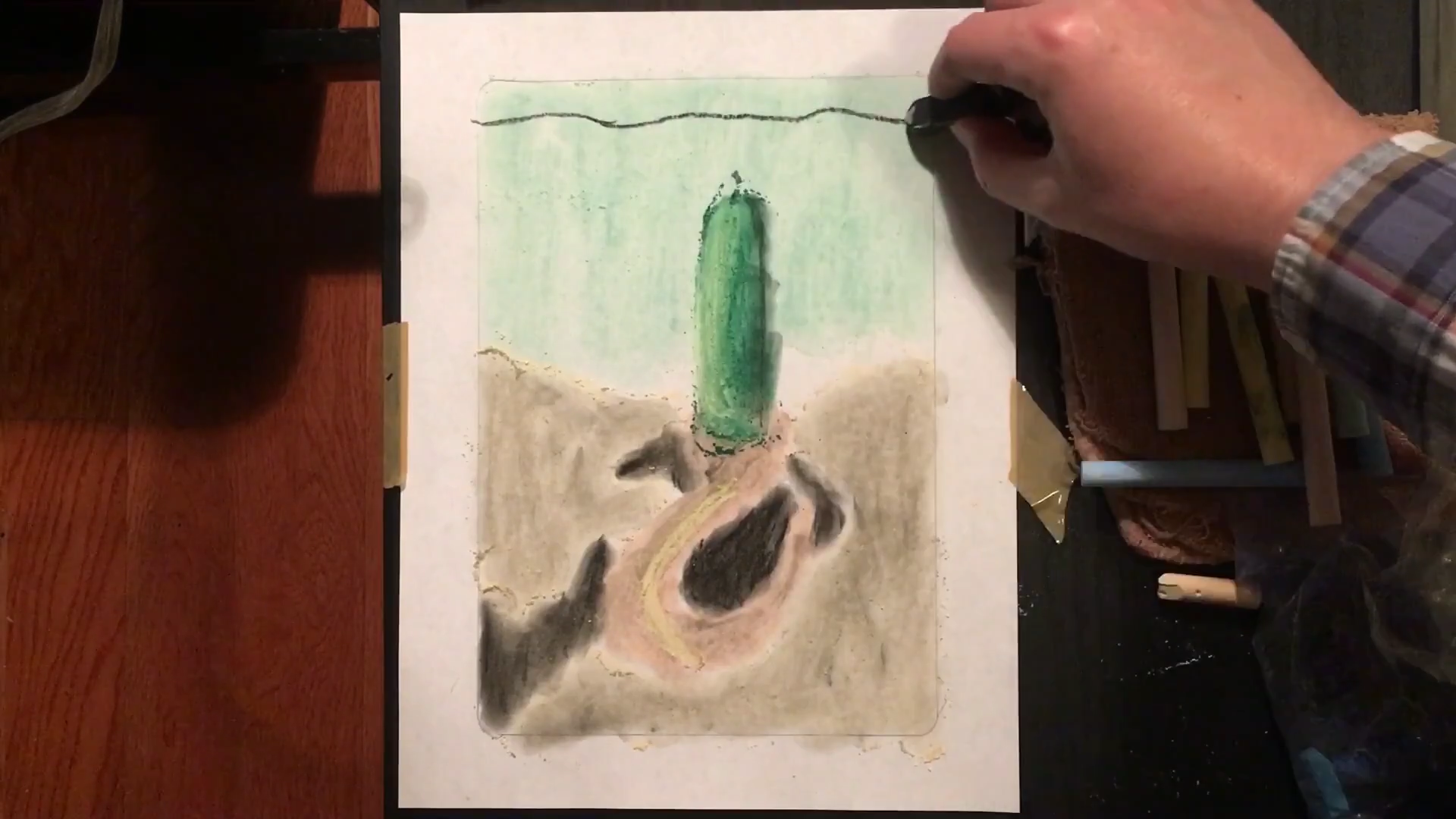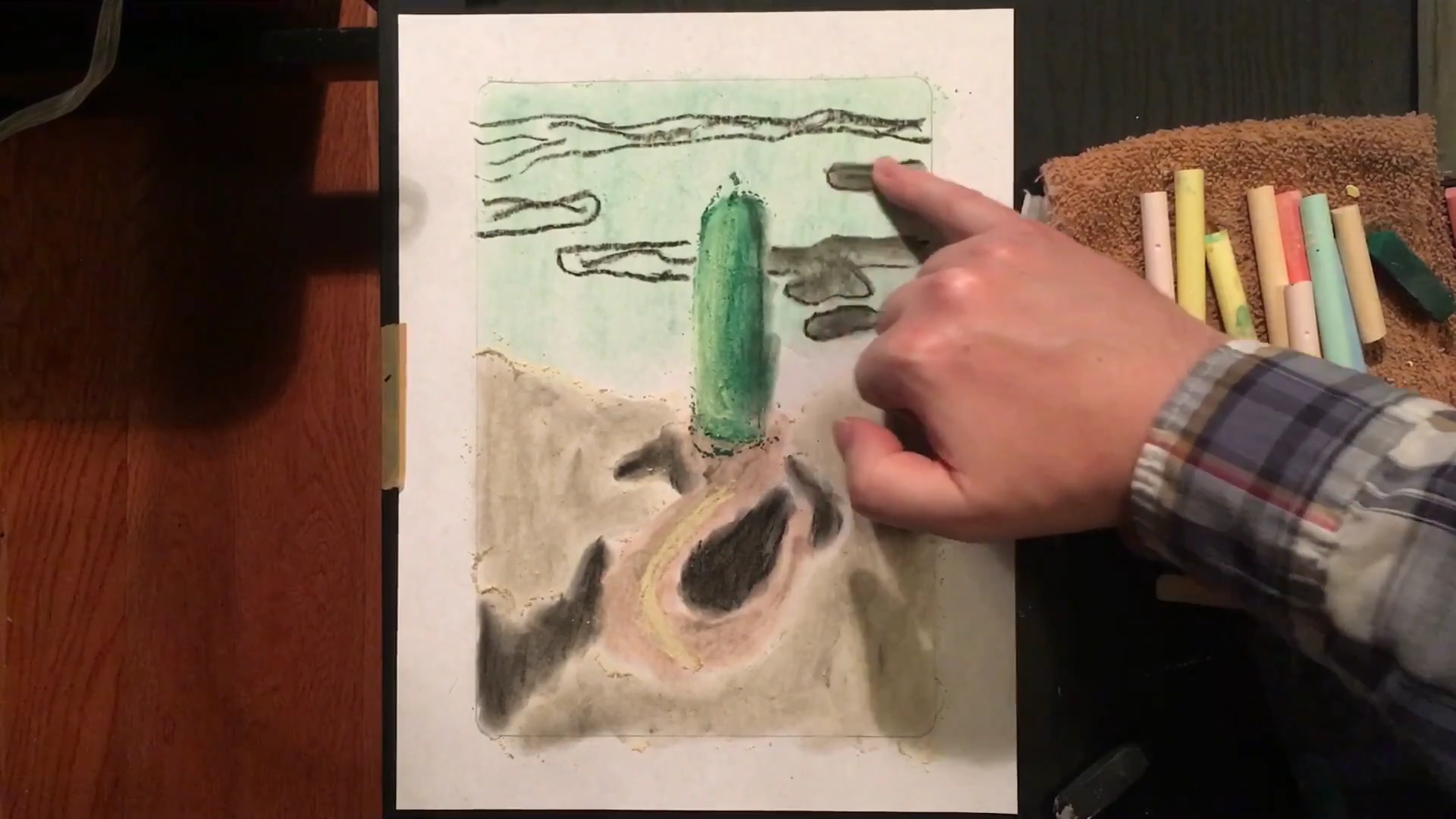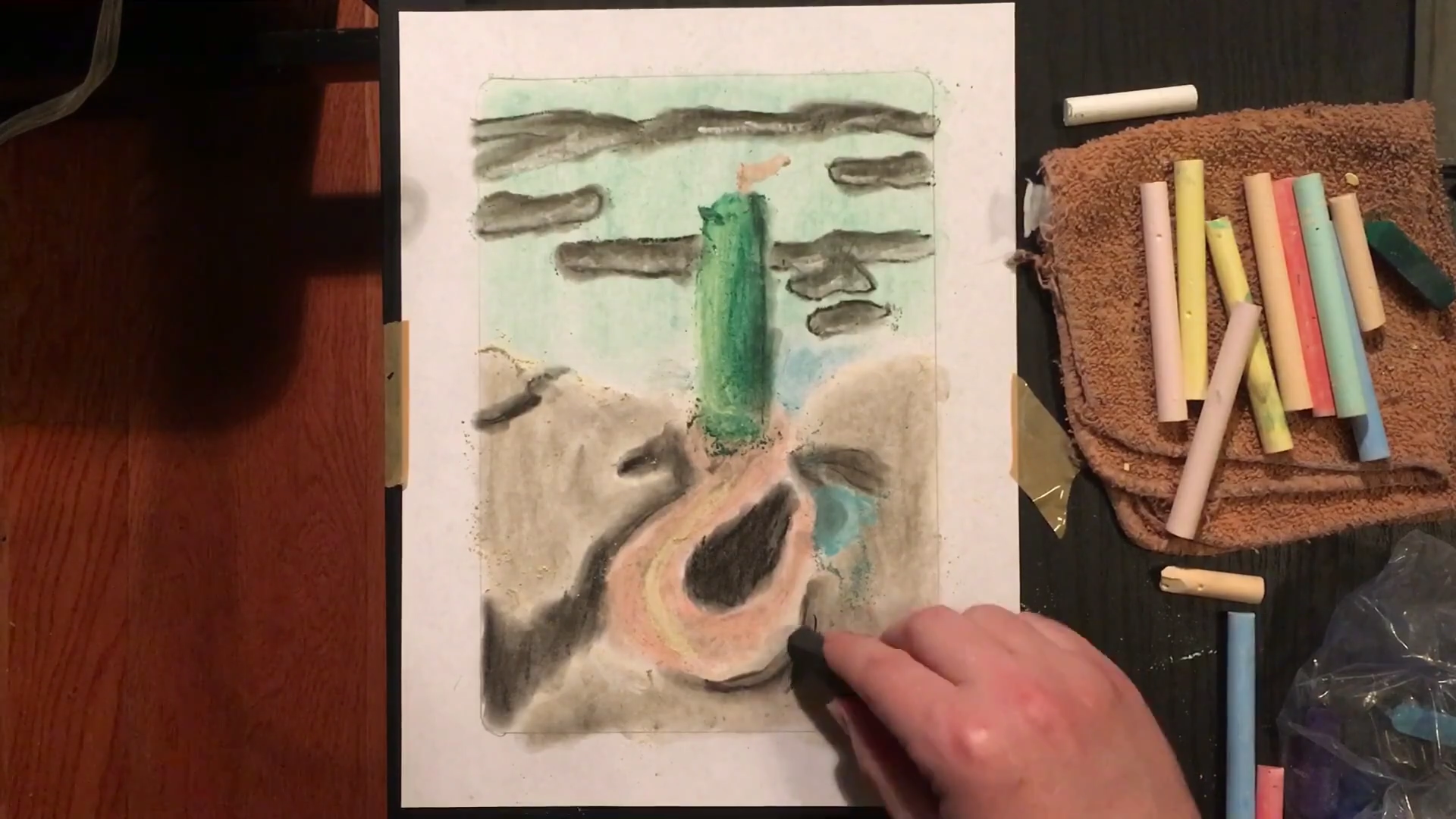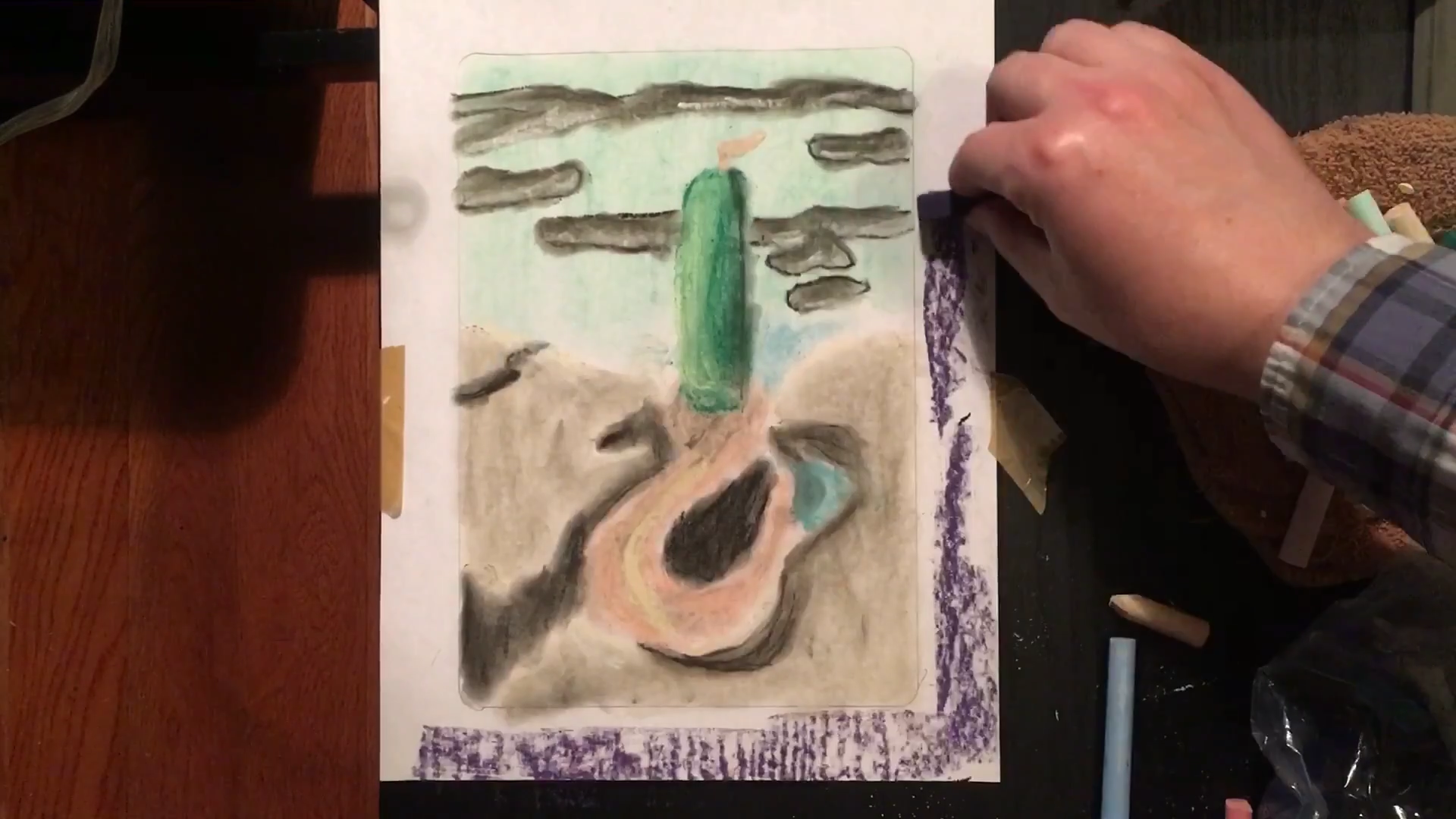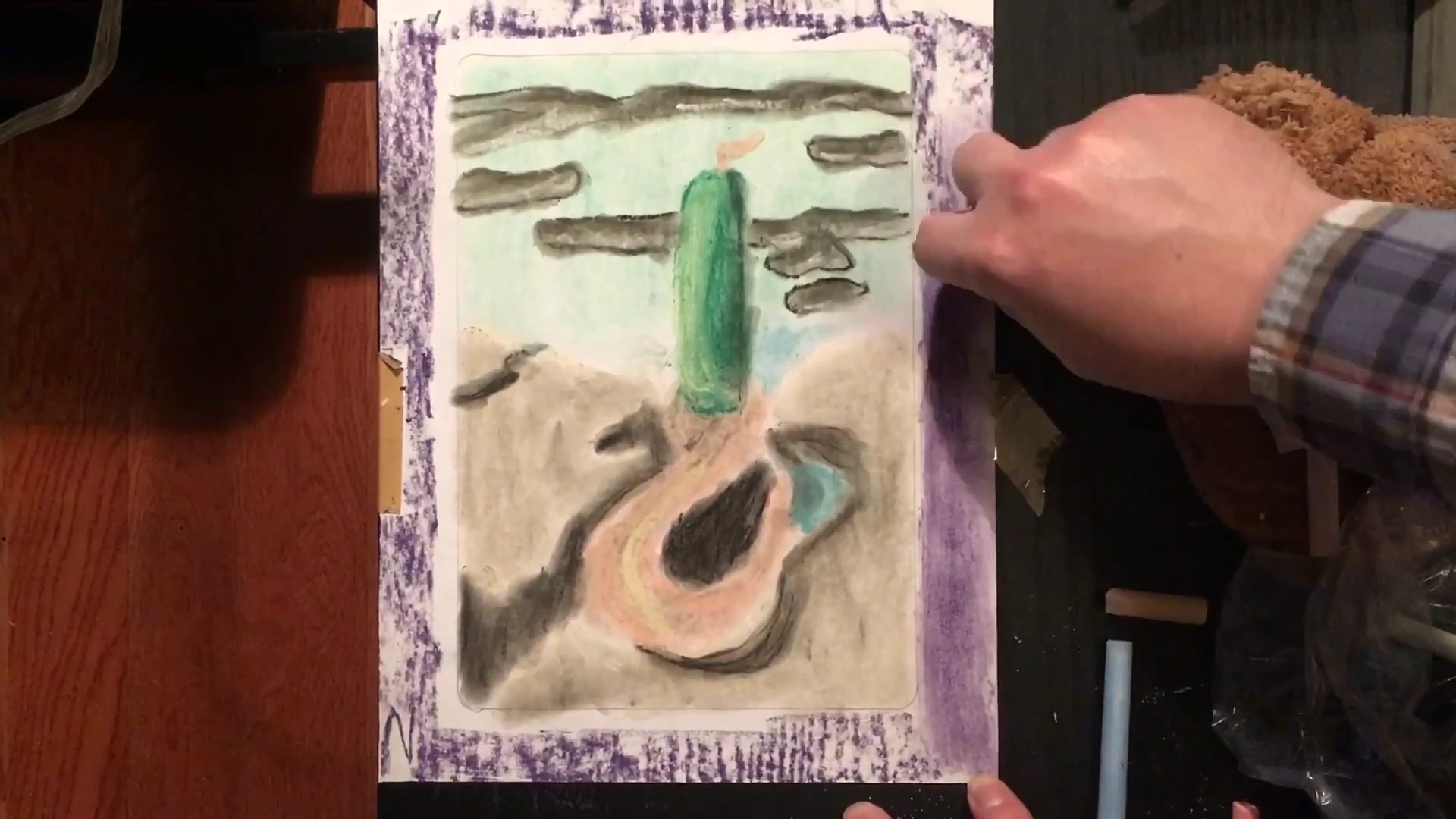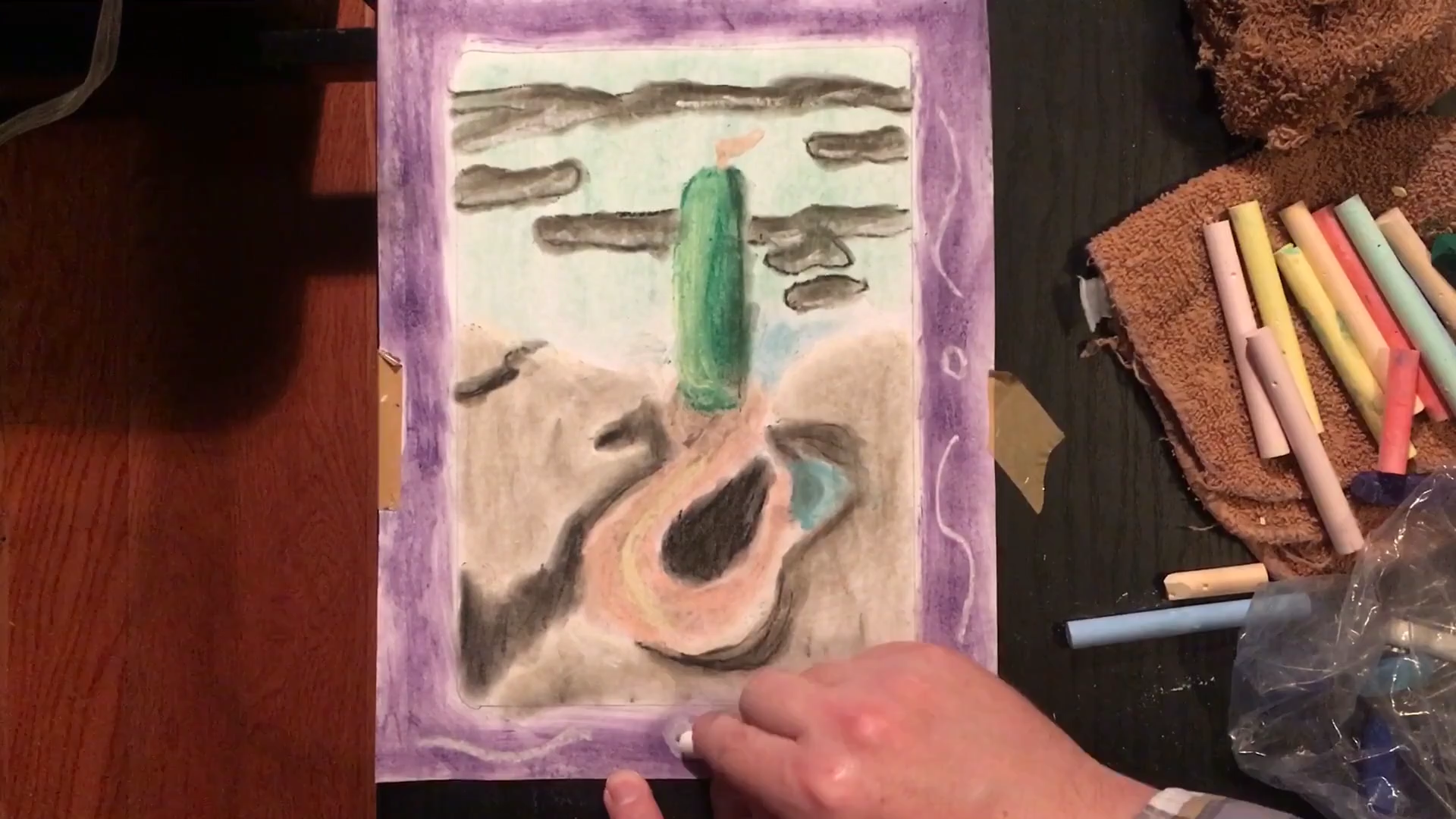Age Range: 5+
Time to Complete: 15-20 minutes.
Supplies Needed
Paper
Chalk pastel or just chalk
1. Using your pencil, draw a large rectangle in the center of your paper (the lines can be about 1-2 inches away from the edges of your paper.) This space can later be used to color in a frame.
2. Begin by coloring in the top portion of the paper as this will represent or sky. Make the sky whichever color you choose; however a lighter color will work better so that clouds can be added later. Blend as you go.
3. Begin creating shapes using your chalk in the bottom half of your paper. The shapes should be reminiscent of the cliffs seen in Coit Tower. Be sure to leave space for the road and other objects.
4. Draw in the road and tower using the techniques you have been using during this lesson. Generally, when working with chalk, working from your lightest color to your darkest will lead to the best results.
5. For the tower, the base color is green with yellow as a lighter color, and dark green for the shadow. Blend the colors with your fingers.
6. Draw in the clouds and shade them with contrasting colors using blending and sketching techniques.
Notes: When doing a reproduction of another’s work, its good to add your style to it. Unless you are trying to make as accurate a copy as possible, feel free to substitute colors, alter shapes, and add in content as you see fit. Make it your own!
7. If you left space to draw in a frame, do so after you have completed your Coit Tower reproduction.
Once you have finished your artwork, store or frame it. With chalk and pastel, be careful when handling as the artwork will smudge.
Marion Cunningham, Coit Tower, c. 1948, pastel on brown paper on board, 12 ⅝ x 9 ⅜ inches, BMoA Permanent Collection 1987.01.44
Marion Osborn Cunningham was born in South Bend, Indiana, on May 29, 1908. The Osborn family moved west shortly after Marion was born and settled in Bakersfield, California. Her studies in art began with Ruth Heil Emerson at Bakersfield High School, continued at Pacific Union College, Santa Barbara College, Stanford University, and later with her husband Ben Cunningham, a young artist she met at Stanford. Cunningham was well known in the 1930s as a pastel artist. Her small compositions were praised for their curious, dream-like charm, deft drawing, and color harmony. She maintained a studio on Montgomery Street, the center of San Francisco’s art colony. In 1937, she became an art critic for “The Coast” and rendered pen and ink drawings for the popular magazine. While en route to Europe, Cunningham died unexpectedly of a brain tumor in New York City on March 25, 1948.
The Bakersfield Museum of Art began as the Cunningham Memorial Art Gallery in 1956 with a donation from the Walter Osborn family who desired to establish an art gallery in memory of their daughter Marion Osborn Cunningham. The monetary gift was accompanied by a collection of work by Marion Osborn Cunningham which initiated the institution’s Permanent Collection. Learn more at bmoa.org/about
Vocabulary
Smudging: The melding together of colors of medium through applying directional pressure and smearing with one’s finger or a tool.
Layering: The placement of different art mediums on top of one another for dynamic effect.

